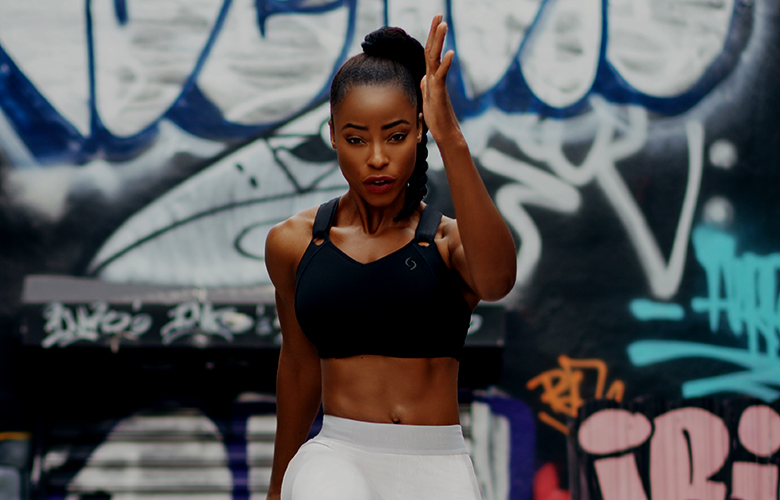
HIIT is a training method that consists of high intensive intervals combined with short regeneration phases. Recent studies have shown that with HIIT four minutes of training can be more effective than 45 minutes of normal cardio training.
You should start with a warm up phase with toprocking or running of ten minutes, until you sweat gently. After the warm up you can start with the HIIT protocol.
There are different types of HIIT _training. The tabata method is a good training regimen for bboys and bgirls because it is similar to the runs you do in a battle.
The tabata regimen comes from a Japanese professor and consists of four minutes of HIIT:
20 sec of high intensity, followed by 10 sec of recovery. In total 8 times=4min!
In the 20 seconds you should do a repetitive combination of exercises where you work with large muscle groups. You should include your legs and your arms.
You repeat this combination for 20 seconds, and then you take 10 seconds of recovery. In the recovery time you should put your hands behind your head, walk around the room and breathe deeply. Then you repeat this for another seven times, which makes a total of eight times.
You can also modify the tabata protocol in accordance with your physical fitness and extend it to your personal preference. To simulate a battle situation you can vary the times:
8 x 35 seconds high intensity, 25 seconds recovery.
After the tabata session you should do a proper cool down of 5 – 10 minutes.
TIP: Do the HIIT training with a pulse watch! This way you can control your performance and your recovery after each exercise.
Burpees: Jump-squat-push up
Skater: Jump from one to the other leg sideways with your arms going to the same side, your back is tilting to the front like in skating
Skipping: Running at the same place and putting your knees up
Split jumps: Jump from a lunge into the lunge and change your feet in the air
Mountain climber: Push-up position; push one knee towards your chest, move back and repeat the other side
Combination of squats and push ups
Rope skipping
Through the high intensity interval training the performer is working at his or her limits, up to 90% of the maximum heart frequency rate. Therefore, the aerobic capacity improves and it is a benefit for the endurance performance. Also the resting metabolic rate increases for the following 24 hours because after the exercise more oxygen is consumed.
Because of these benefits the HIIT is good for dancers who start to train their physical capacity as well as for dancers who are already well-trained.
Until recently, long aerobic workouts have been promoted as the best method to get fit and reduce fat. There was the popular belief that the body is burning the fatty acids after at least 30 minutes of training. HIIT has been shown to burn fat more effectively and increases the resting metabolic rate. It also lowers insulin resistance and adapts the skeletal muscles. This means that the skeletal muscle fat oxidation is enhancing and the glucose tolerance is improving.
REFERENCES:
Tabata / Izumi, Nishimura / Kouji, Kouzaki / Motoki, Hirai / Yuusuke, Ogita / Futoshi, Miyachi / Motohiko, Yamamoto / Kaoru (1996). Effects of moderate-intensity endurance and high-intensity intermittent training on anaerobic capacity and VO2max. In: Medicine & Science in Sports & Exercise. 10/28/1996, pg. 1327-1330.
PMID: 8897392
Also By Urban Dance Health:
Mental Practice For High Level Performance
Breakdancing: Warm Up Essentials


Urban Dance Health (UDH) is located in Stuttgart, Germany. It consists of a team of three physiotherapists who are internationally established dancers themselves, so they know both the requirements and the needs of dancers. They regularly conduct health workshops for dancers and dance teachers, offer health checks at events and publish tutorials and articles in the Urban Dance Health Blog. The Urban Dance Blog covers topics such as injury prevention, rehabilitation and regeneration as well as scientific research about how to maintain a long and healthy dance career. In order to promote the health of dancers in a sustainable way, UDH now also trains medical professionals in dance medicine. Doctors and therapists require the right tools to respond to the needs of dancers. This creates a worldwide network of health experts who enable interdisciplinary health care for dancers.
Read Full Profile© 2021 TheatreArtLife. All rights reserved.

Thank you so much for reading, but you have now reached your free article limit for this month.
Our contributors are currently writing more articles for you to enjoy.
To keep reading, all you have to do is become a subscriber and then you can read unlimited articles anytime.
Your investment will help us continue to ignite connections across the globe in live entertainment and build this community for industry professionals.